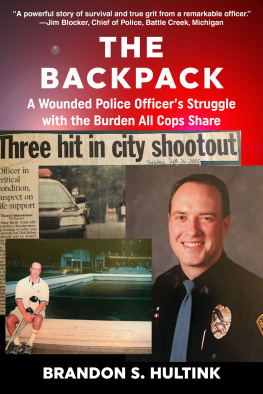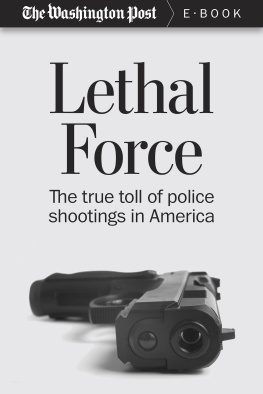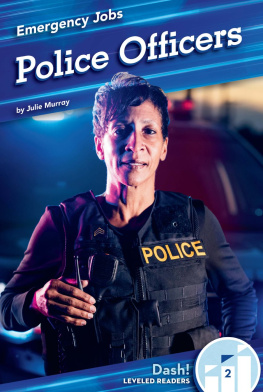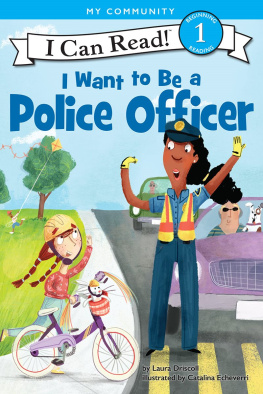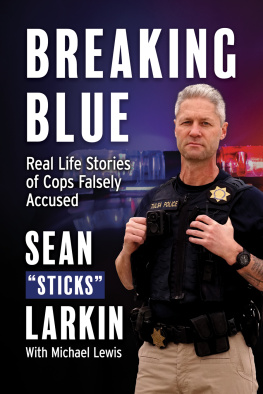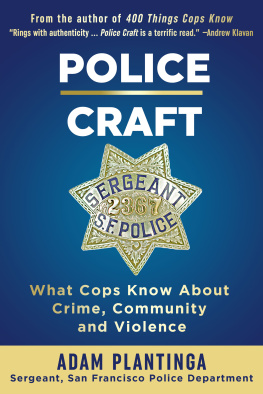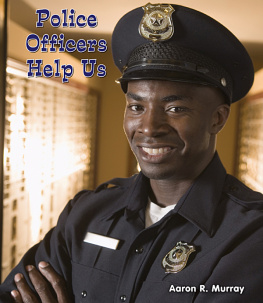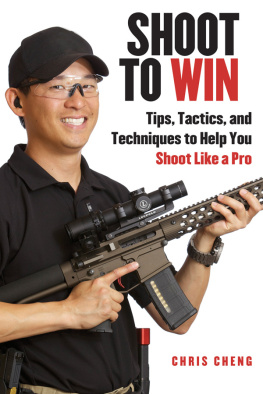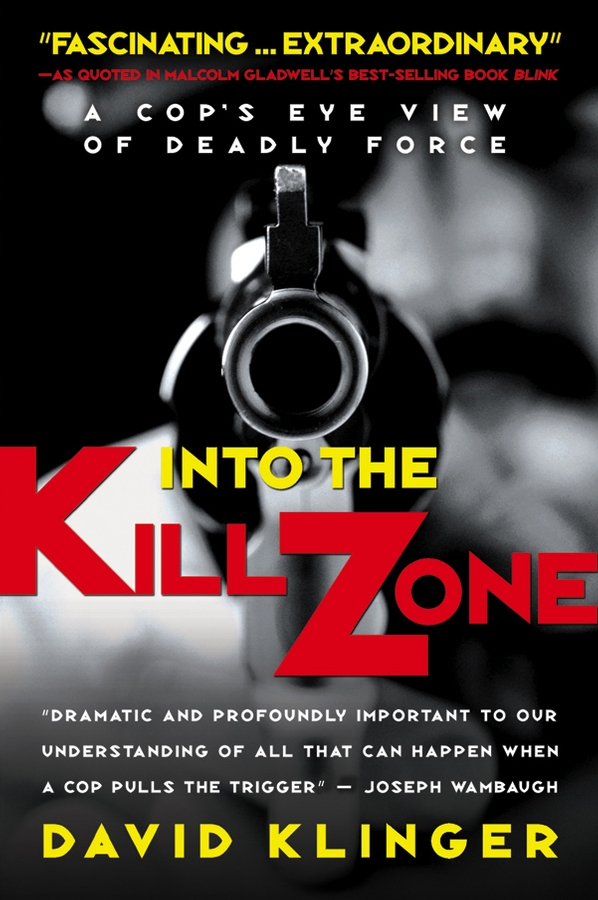Contents
Praise for Into the Kill Zone
Into the Kill Zone is unlike anything else in print. It is a must-read for anyone interested in the ofttimes violent world of law enforcement.
Robert D. Keppel, Ph.D., author, The Riverman and Signature Killers
Written by a former police officer turned criminologisthimself once involved in a fatal shooting Into the Kill Zone offers unique insights into the experiences of officers who have had to make split-second decisions about whether or not to use deadly force in the line of duty. Drawing on scores of firsthand accounts told by police officers, some of them still struggling to deal with the aftermath of shootings in which they have been involved, this gripping book will be of interest to a wide range of readersfrom criminologists, social psychologists, and law-enforcement officers to sociolinguists, story analysts, and other humanists concerned with narrative as a basic sense-making strategy.
David Herman, professor of English, North Carolina State University
Into the Kill Zone is one compelling book. It takes the reader inside the hearts and minds of Americas police officers as they face danger and grapple with the awesome power they possess to take human life.
Gil Kerlikowske, chief of police, Seattle Police Department
This is a very special book. No one should presume to discuss police violence until they have read it and thought deeply about what it has to teach those of us who have been fortunate enough not to have faced the decision to use deadly force.
Rodney Stark, professor of sociology, University of Washington
Nobody has ever before done what Klinger has accomplished in Into the Kill Zone. By presenting the most detailed and private thoughts of officers who have shot citizens, he has made a unique and major contribution to the literature on policing.
James J. Fyfe, Ph.D., deputy commissioner of training, New York Police Department

Copyright 2004 by David Klinger. All rights reserved.
Published by Jossey-Bass
A Wiley Imprint
989 Market Street, San Francisco, CA 94103-1741 www.josseybass.com
No part of this publication may be reproduced, stored in a retrieval system, or transmitted in any form or by any means, electronic, mechanical, photocopying, recording, scanning, or otherwise, except as permitted under Section 107 or 108 of the 1976 United States Copyright Act, without either the prior written permission of the Publisher, or authorization through payment of the appropriate per-copy fee to the Copyright Clearance Center, Inc., 222 Rosewood Drive, Danvers, MA 01923, 978-750-8400, fax 978-646-8600, or on the Web at .
Jossey-Bass books and products are available through most bookstores. To contact Jossey-Bass directly call our Customer Care Department within the U.S. at 800-956-7739, outside the U.S. at 317-572-3986, or fax 317-572-4002.
Jossey-Bass also publishes its books in a variety of electronic formats. Some content that appears in print may not be available in electronic books.
Library of Congress Cataloging-in-Publication Data
Klinger, David, date.
Into the kill zone : a cops eye view of deadly force / David
Klinger. 1st ed.
p. cm.
Includes bibliographical references.
ISBN-13 978-0-7879-7375-9 (alk. paper)
ISBN-10 0-7879-7375-0 (alk. paper)
ISBN-13 978-0-7879-8603-2 (paperback)
ISBN-10 0-7879-8603-8 (paperback)
1. Police shootingsUnited States. 2. PoliceUnited
StatesInterviews. I. Title.
HV8138.K56 2004
363.2'32dc22
2003023188
FIRST EDITION
For my beloved cousin Barry, Who never made it back to tell his story.
For my beautiful bride, Sonia, Whose loving-kindness helped me make peace with my visit.
And for our precious daughter, Carly. May she never have to go there.
Acknowledgments
This book is the culmination of a journey that began many years ago when, as a young police officer in Los Angeles, I killed a man to save my partners life. The journey would not have been successful without the help of numerous people over the years, so I take this space to thank them for their assistance.
My initial load of thanks goes to Bobby Hyde, John Spencer, Lyle Prideaux, and John Shaughnessy, my first two sets of training officers at the 77th Street Division of the LAPD. They put up with my navet, showed me the ropes, provided worthy counsel about many things, and most important, they gave me the skills to prevail on that warm night in July 1981 and in several other precarious situations during my tenure as a cop. Other senior officers who played key roles in my early police education include Billy Douglass, Steve Gross, Bob Rysdon, Ed Lindsey, and Nick MacArthur. I also had the pleasure of working for some top-notch supervisors: Joe Ramm, Howard Silverstein, Tim Anderson, and Jack Davenport chief among them. I thank all of these men, plus many other members of the LAPDmost notably, Frank Lipus, John Ix, Elmer Pelligrino, Ernie Haleck, and Ken Wisemanfor their kind support and for putting up with my rough edges in the wake of my visit to the kill zone. In a similar vein, thanks are in order to Steve Harris, Chuck Krieble, Ken Koenig, and the rest of the guys and gals I worked with at the Redmond PD as I wrestled with my experiences in the City of Angels.
I am quite grateful that I had many friends outside law enforcement who also provided support and encouragement in my time of need. Special thanks here go to Lauren Hanna, Andrea Merriman, Susan Bergstrom, Laurie Harris, Tommy Bartholomew, Marcel Moore, Greg Crum, Randy Kyte, Al George, Rob Wall, Casey Roberts, Pat and Al Robinson, Tom and Jane Falkenborg, Lu and Kim Gray, Bruce Wotherspoon, Kelly McAllister, the Shaw Family, Kathy Craig, Jeff Towery, Susan McWilliams, Rick Pearl, and Greg Mattingly.
Dick Bennett, Sandy Baxter, Jim Fyfe, and Ron Weiner at American University helped me shift gears from police work to academe. All four were wonderful teachers, friends, mentors, and advisers and have remained a presence in my professional and personal lives. A special thanks to Ron for suggesting the five-step interview process that I used in the study that led to this book. A special thanks to Jim for showing me how to bring an academic eye to the study of deadly force and for his friendship over the years.
George Bridges, Herb Costner, and Judy Howard at the University of Washington played especially large roles in getting me to the final step in my formal education. They taught me how to think like a sociologist, convinced me to broaden my research horizons, and helped me see how to develop the project that led to this book.
Jackie Hagan and Jan Chafetz at the University of Houston helped me turn my ofttimes turgid prose into readable text and thereby allowed me to secure the tenure I needed to undertake the project that resulted in this book. I also thank Nicky Parham and Alan Stoler, two students at U of H, for the assistance they provided as the project moved forward.
At the University of Missouri-St. Louis, I thank Jennifer Bursik for her input early on in the writing process and Richard Wright for his steadfast support throughout. Its always good to have quality people in ones corner. I also thank Laurie Mitchell and Jenna St. Cyr for the great job they did transcribing the hundreds of hours of tapes that I developed during the interviews I conducted.
A double thanks to Jenna for her input regarding the selection of some of the stories that appear in the book and for reading early drafts of material as I produced it. In this connection, I also thank Theresa Wall for reading the stories as I put them together and Cyn Morris, Callie Rennison, and Melody Martin for their suggestions on early drafts.


